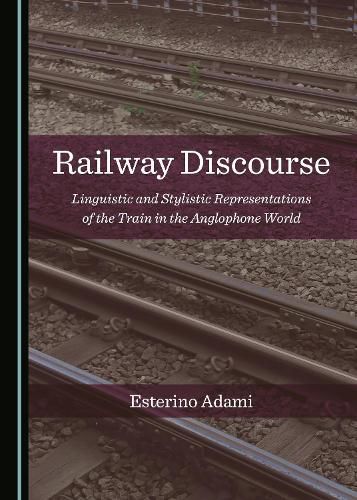Readings Newsletter
Become a Readings Member to make your shopping experience even easier.
Sign in or sign up for free!
You’re not far away from qualifying for FREE standard shipping within Australia
You’ve qualified for FREE standard shipping within Australia
The cart is loading…






This volume examines the train trope in a variety of cultural, literary and linguistic contexts, from contemporary crime fiction and dystopian graphic narratives to postcolonial railway travelogues, by employing a range of methods and frameworks. Situated within the Discourse, Pragmatics and Sociolinguistics collection, the book critically engages with significant areas such as discourse and narrative structure. Interpreting the railway as a powerful cultural and imaginary site in the English-speaking world that traverses a range of creative domains, this study explores the ways in which the train and its structures, symbols and metaphors are textually rendered and the type of stylistic effects they generate in readers. It introduces, frames and discusses the idea of railway discourse and focuses on specific case studies (The Girl on the Train by Paula Hawkins, the graphic novel Snowpiercer and Monisha Rajesh’s Around India in 80 Trains). In particular, it considers how a compartment window can constrain, and shape, the point of view of a narrator, the way in which science fiction trains are conceptually imagined, and the intercultural implications of rail travel writing in India today. To analyse the role and meaning of the railway in these texts, and compare them with others, this work adopts and adapts analytical tools and critical concepts from the integration of different fields, such as stylistics and linguistics, postcolonial criticism and literary studies.
$9.00 standard shipping within Australia
FREE standard shipping within Australia for orders over $100.00
Express & International shipping calculated at checkout
This volume examines the train trope in a variety of cultural, literary and linguistic contexts, from contemporary crime fiction and dystopian graphic narratives to postcolonial railway travelogues, by employing a range of methods and frameworks. Situated within the Discourse, Pragmatics and Sociolinguistics collection, the book critically engages with significant areas such as discourse and narrative structure. Interpreting the railway as a powerful cultural and imaginary site in the English-speaking world that traverses a range of creative domains, this study explores the ways in which the train and its structures, symbols and metaphors are textually rendered and the type of stylistic effects they generate in readers. It introduces, frames and discusses the idea of railway discourse and focuses on specific case studies (The Girl on the Train by Paula Hawkins, the graphic novel Snowpiercer and Monisha Rajesh’s Around India in 80 Trains). In particular, it considers how a compartment window can constrain, and shape, the point of view of a narrator, the way in which science fiction trains are conceptually imagined, and the intercultural implications of rail travel writing in India today. To analyse the role and meaning of the railway in these texts, and compare them with others, this work adopts and adapts analytical tools and critical concepts from the integration of different fields, such as stylistics and linguistics, postcolonial criticism and literary studies.